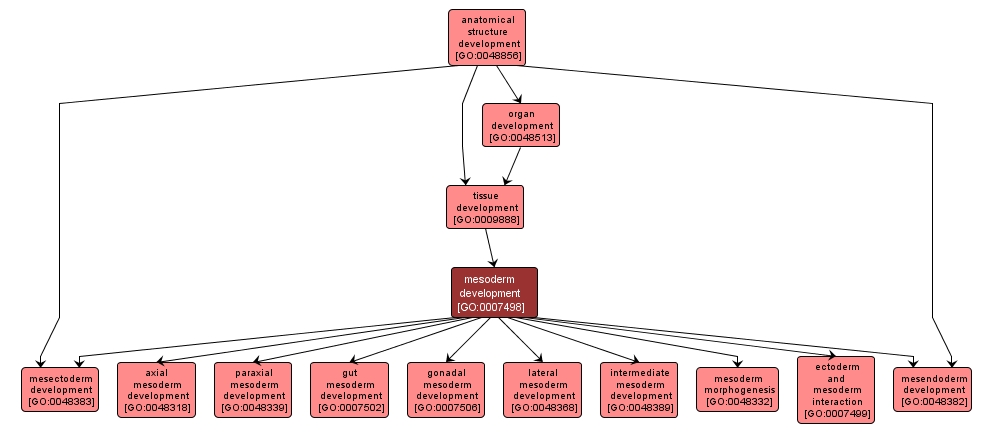GO TERM SUMMARY
|
| Name: |
mesoderm development |
| Acc: |
GO:0007498 |
| Aspect: |
Biological Process |
| Desc: |
The process whose specific outcome is the progression of the mesoderm over time, from its formation to the mature structure. The mesoderm is the middle germ layer that develops into muscle, bone, cartilage, blood and connective tissue. |
|

|
INTERACTIVE GO GRAPH
|














